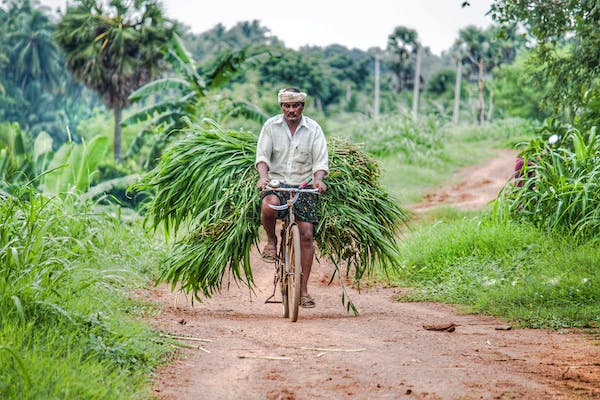Still unemployed ? Looking for a job or planning to start some business, farming or agriculture ? yes job, farming , business or agriculture what ever you do the main motive is to earn money .To earn profit. So it is wise to select something which is profitable. Profitable with initial low investment. This is no other than Mushroom farming.
Mushroom farming is one of the best farming option in 2020. It is a kind of farming which can give you lot of money with very low investment.
There is a huge demand for Mushroom now a days and gradually the demand is increasing. Mushroom has a high nutritional value and health benefit .So why not capitalize this demand as a profitable business venture .
I am going to tell you each and every aspect for Mushroom farming .Go through it till end .Then start your business.
Give a trial. Start it small. experiment with different way and different type of mushroom farming .With experience you can make it big. Don,t afraid of failure. Because failure is the pillar of success.
This phrase or proverb is not applicable here. Because once you read this article till end ,I am sure you can gather enough information to start a successful mushroom farming.
Mushroom farming can be a lucrative and rewarding business in India, as mushrooms are highly nutritious and in high demand both domestically and internationally. Here are some steps to get started with mushroom farming in India:
Choose the type of mushroom to cultivate: There are several types of mushrooms that can be grown in India, such as oyster mushrooms, button mushrooms, shiitake mushrooms, and more. Research the different types of mushrooms and their cultivation requirements before deciding which one to grow.
Identify a suitable location: Mushroom cultivation requires a controlled environment with specific temperature, humidity, and lighting conditions. You can either set up a farm in a suitable location or use a greenhouse.
Obtain the necessary equipment: You will need equipment such as mushroom spawn, substrate materials, a humidifier, a temperature and humidity controller, and growing trays. These can be obtained from local suppliers or online.
Prepare the substrate: The substrate is the material that the mushroom will grow on. Depending on the type of mushroom, the substrate can be made from a variety of materials such as straw, sawdust, or compost. Sterilize the substrate to prevent contamination.
Inoculate the substrate: Once the substrate is ready, inoculate it with mushroom spawn. The spawn is the fungal material that contains the mycelium, which will grow into the mushroom fruiting body.
Maintain the growing conditions: Maintain the ideal temperature, humidity, and lighting conditions for the mushroom to grow. Monitor the growth and make any necessary adjustments.
Harvest and market the mushrooms: Harvest the mushrooms when they are fully grown and sell them to local markets or exporters.
Starting a mushroom farm requires a significant investment of time, money, and effort, but it can be a profitable business if done properly. It is recommended to seek the guidance of a mushroom cultivation expert or consultant to ensure success.
What is Mushroom
Mushroom is a kind of Fungi which we can eat. But not all kind of Mushroom which can be eaten. There are some types of Mushroom we can eat.They are cultivated commercially. The use of Mushroom is not limited to eating .Mushroom is used as a raw material to prepare medicine. Mushroom medicine as Capsules and tablets are accepted widely across globe.
Mushrooms are full of fiber, protein and minerals as well as rich in Vitamin B and C. In last few years, many farmers ,educated young graduates from urban area attracted toward this lucrative business option .Because you don’t need agriculture land to start this Mushroom farming. It needs little space , easy to grow with in a short span of time and of course, gives you better profit.
Types of Mushrooms
Usually four type mushroom you can cultivate in India as they have huge market potential. They are
White Button Mushroom
Portobello Mushroom
Dhingri (Oyster) Mushroom
Paddy Straw Mushroom
White Button mushroom is most popular type in India with highest demand. Average price for button mushroom varies between 80 to 130 per kg .commercially mushroom farming. Mostly in hotels and restaurants you will see Button Mushroom curry in their menu list.
Paddy Straw Mushroom also have great market potentials and popular in eastern part of India .
Cultivation process for Button Mushroom
In this article we will discuss the Farming process for Button Mushrooms. Button Mushrooms farming doesn’t require sunlight and you can start this indoor. The suitable climate for button mushroom farming is winter season .So in India the ideal time for button mushroom farming is from October to April.
Cultivation Procedure has five main steps.
1.Collecting Mushroom Span
2.Preparation of Compost
3.Spawning for mulch
4.Casing
5.Cropping and Harvesting
1.Collecting Mushroom Span
2.Preparation of Compost
Composts are artificially prepared Substrate.
The basic raw material for mushroom production is straw. You can use wheat straw or baled straw and Poultry manure
Compost is a selective decomposed substrate for growing white button mushroom. Its is in simple term is microbial degradation of organic wastes.
The quality of mushroom compost depends three factors:
● Nature and Quality of basic material
● Organic and in organic supplements
● Management of compost during composting
Nature and quality of basic material: The main raw material for mushroom production is straw. You can use wheat straw and mule dung. These are Traditional raw materials for mushroom producers .Now a days people are using baled straw and poultry manure mainly as an alternative. Indian state like Kashmir Mushroom farmers are using Paddy straw for Mushroom farming.
In present time there is technology available to use low cost agriculture waste like maize straw, linseed straw ,soybean straw to be used as a raw material for compost. You can choose your raw materials which is available locally.

